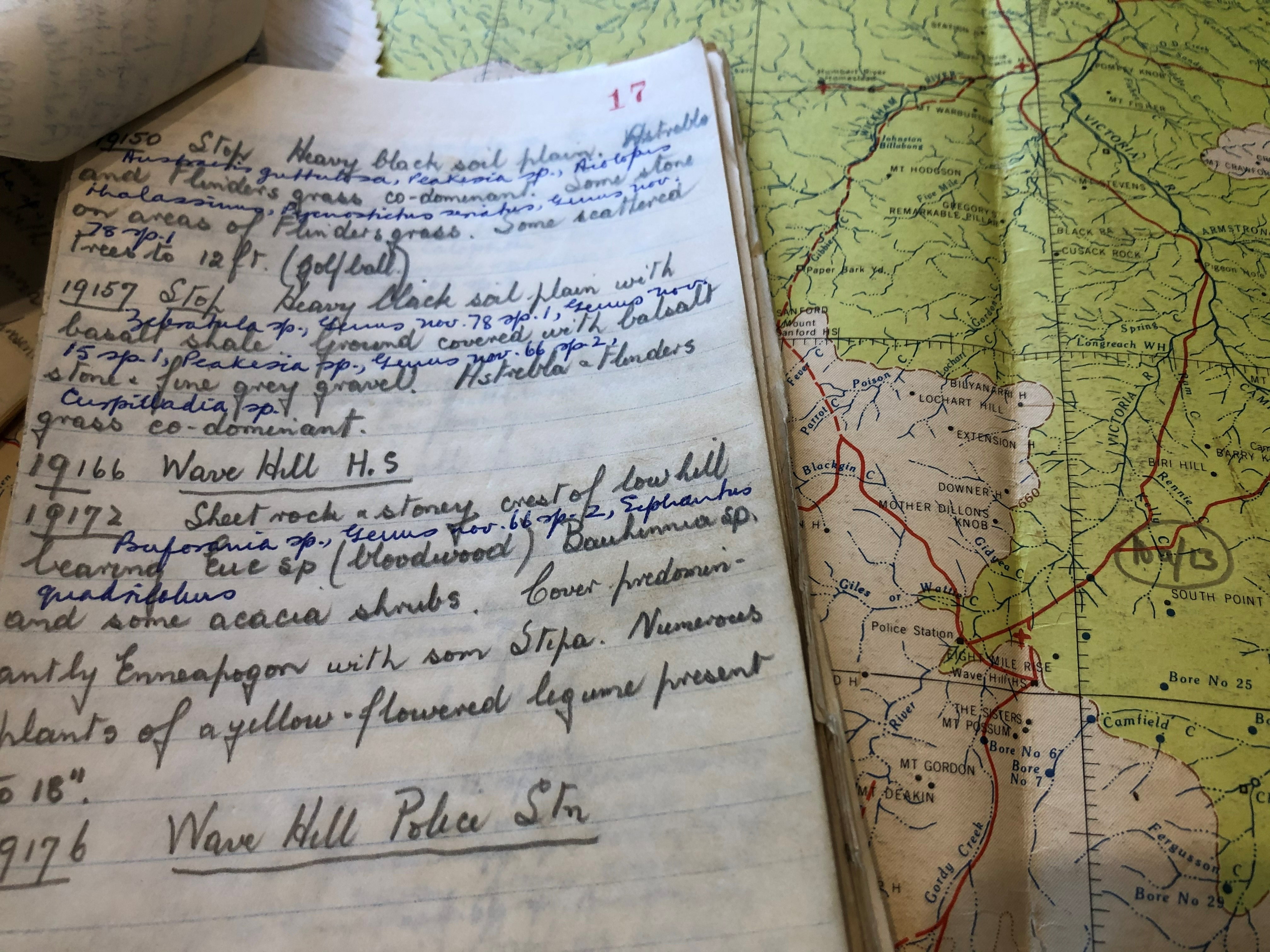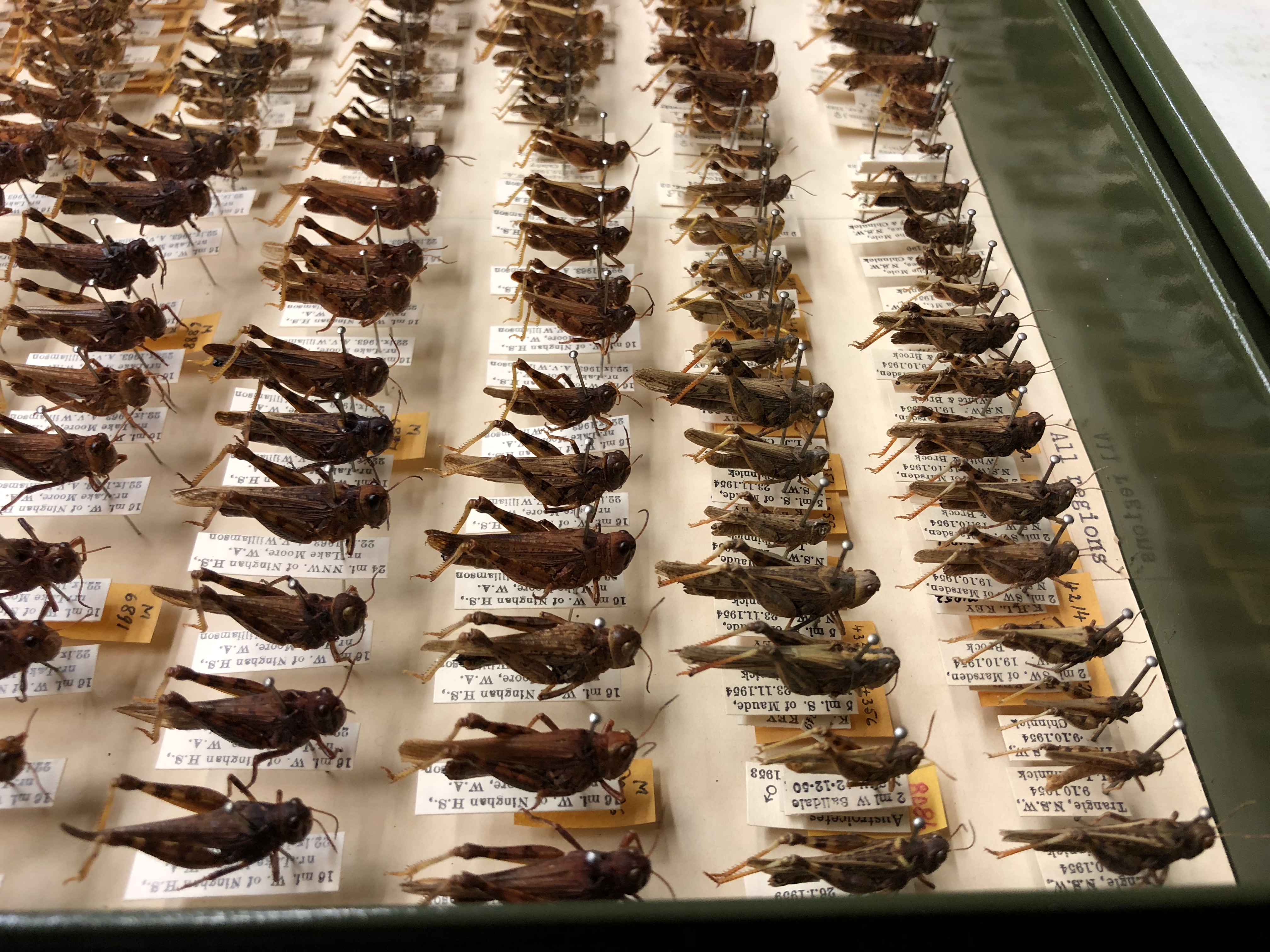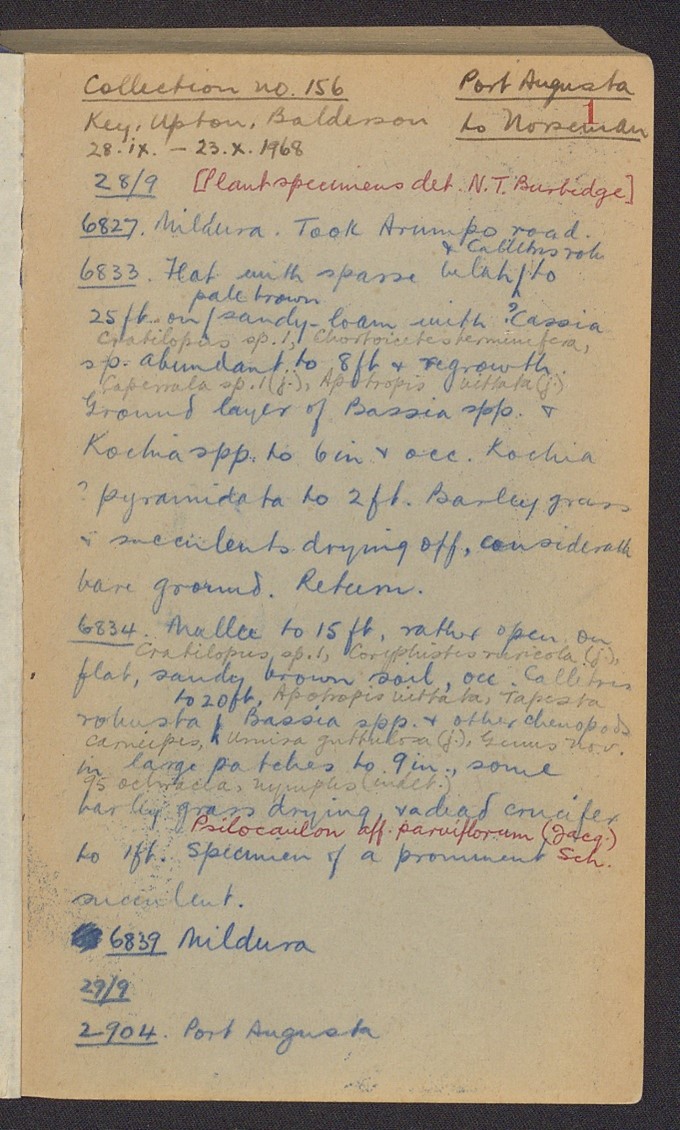
Sciences & Technology
The Australian grasshopper that’s given up sex

Using old field notes and new technology, researchers used COVID lockdowns to retrace the steps of pioneering Australian insect surveyors, virtually
Published 19 January 2023
One of our favourite things about being biologists is the road trip – driving, collecting, observing and learning across Australia’s vast and naturally rich landscape.
Field work wasn’t possible for 263 days during Melbourne’s COVID-19 lockdowns but that didn’t stop us. We spent months travelling all around Australia – we just did it with Google Earth.

We were looking for the precise locations of collecting sites for thousands of specimens of Australian grasshoppers that have sat impaled on entomology pins in the Australian National Insect Collection (ANIC) since 1947.
Grasshoppers are a critical part of our biodiversity; they are major links in the food chain, some species are threatened, some are agricultural pests and they are fascinating from a scientific and natural history perspective.

Sciences & Technology
The Australian grasshopper that’s given up sex
Some can even reproduce by cloning and consist only of females.
The person mainly responsible for collecting – and pinning – the grasshoppers was the late Dr Ken Key, a South African who came to Australia in 1936 to study the Australian plague locust. Dr Key worked at ANIC for over 35 years, building up a collection of over one hundred thousand specimens through extensive field trips between 1936 and 1989.
The research teams famously stopped every 10 miles to look for grasshoppers, no matter what the conditions. This may seem somewhat optimistic as a surveying method, but grasshoppers are so ubiquitous that this strategy worked in most parts of Australia, with almost all sites having something hopping around.

Dr Key was a meticulous man who took detailed field notes that have fortunately been stored by ANIC since Key’s retirement. There are 223 volumes of notes, each recording a different field trip around Australia. These notebooks formed the basis of Anwar’s PhD project and he carefully scanned every one of the 2486 pages.
In late 2022 we uploaded these scans to the Biodiversity Heritage Library (BHL), the world’s largest online repository of open-access biodiversity literature and archival material. We also published a research paper on the transcription process in Austral Entomology which included 8975 new occurrence records for 478 species of grasshopper and the records were uploaded to the Atlas of Living Australia.
Scanning and uploading the notebooks was the easy bit – the hard part was deciphering the handwriting and then working out where the surveyors went.
When Dr Key and colleagues were collecting their grasshoppers, there was no such thing as a GPS. Instead, they recorded their locations using the vehicle odometer.
Each time they stopped they’d record the mileage (and it was indeed miles for most of the notebooks). They’d also record the mileage at towns, homesteads, road junctions, creek crossings and other significant features, as well as recording details of the landscape, vegetation and, of course, grasshoppers.

Sciences & Technology
Q&A: Victoria’s monster mosquito explosion
So, all we had to do was travel along the roads of Google Earth, count the miles, and find the locations. Sounds simple? Except that we quickly found that things had changed quite a bit over the years.
The main challenge was the changes in the roads, but there were other changes too including relocations of towns or homesteads. Some of the ‘roads’ that the grasshopper hunters travelled through central Australia were newly created by surveyor Len Beadell but had since become barely discernible on Google Earth.
We heard that there were maps of the collecting sites at ANIC, but after much digging, they, unfortunately, could not be found. We did however find some digital 1:250,000 scale maps of Australia from the 1950s and 1960s, which were a huge help in resolving the many puzzles and mysteries from the notebooks.
After reading these fascinating notebooks, and appreciating the challenging conditions they endured, we naturally wanted to know more about the collectors themselves.

Dr Key’s former colleague and ANIC manager Murray Upton participated in many of the field trips and told us that Ken Key loved chocolate and would keep chocolate bars in a car fridge, putting the one he wanted to eat on the dashboard to warm up a bit (they usually melted before he got to them).
There was also Lew Chinnick, who enthusiastically led some epic expeditions for up to two months through extremely rough and remote country during the heat of summer, with no air-conditioning.

Sciences & Technology
The grasshopper that was lost, then found, is now endangered
Sadly, he died in his 40s from an allergy to grasshoppers.
Another of the collectors was John Calaby, who was a young biochemist with an interest in insects, especially termites. He also worked on myxomatosis and later became famous for his work on reproduction in marsupials. His notes were the roughest but he clearly relished being in the middle of nowhere.
Over the past five years of Google Earth journeys, we have transcribed just shy of 30 per cent of the 2486 pages.
These data give us a rare snapshot of the status of Australia’s invertebrate fauna, and re-surveys of these sites will allow us to understand how the distributions of plants and animals have changed. Only 170 of the 478 grasshopper species in the notebooks we transcribed have been formally described, so there’s still much work to be done to increase our knowledge of Australian grasshoppers.

And we still have the other 1700 notebook pages to finish transcribing.
But the records we have extracted are now available to the public and researchers alike on the Atlas of Living Australia, and will hopefully encourage further study on this important group of Australian animals.
Banner: Entry of notebook 85 which passed through Wave Hill Station in 1958. Photo: Michael Kearney